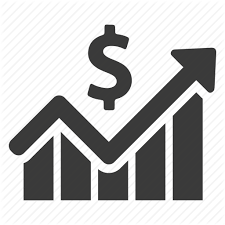Forex Trading Education for UAE Traders
Forex Trading Education for UAE Dubai Traders is a comprehensive program designed to equip traders in the United Arab Emirates with the necessary knowledge and skills to navigate the global foreign exchange market. This step-by-step training focuses on understanding currency movements, analyzing forex market trends, and implementing effective trading strategies. It covers a wide range of topics including technical analysis, risk management, and trading psychology. This free Forex trading education in UAE aims to enable UAE traders to make informed trading decisions, manage their investment portfolio efficiently, and ultimately achieve financial success in the forex market.

Understanding the Basics Terminologies of Forex Trading
- Base Currency: The first currency listed in a forex pair, which shows how much the base currency is worth in terms of the other currency in the pair.
- Quote Currency: The second currency in a forex pair. It is used to determine the value of the base currency.
- Pip: The smallest unit of price for any foreign currency, which measures the amount of change in the exchange rate for a currency pair.
- Leverage: A tool used in forex trading where traders can control large amounts of money using very little of their own and borrowing the rest.
- Margin: The amount of money needed in your account to maintain your market positions.
- Spread: The difference between the bid and ask prices for a currency pair, which represents the broker’s commission.
- Lot Size: The number of units of currency in a standard lot. A standard lot is usually 100,000 units of the base currency.
- Bid Price/ Ask Price: The bid-ask spread is the difference between a buyer’s maximum bid price and a seller’s minimum ask price, indicating the exchange rate.
- Long Position: When a trader buys a currency expecting its value to increase.
- Short Position: When a trader sells a currency expecting its value to decrease.
- Stop-Loss Order: An order placed with a broker to sell a security when it reaches a certain price, designed to limit an investor’s loss on a security position.
- Take Profit Order: An order placed with a broker to sell a security when it reaches a certain price, to lock in a specified amount of profit.
Currency Pairs
A currency pair in the foreign exchange (FX) market is a measure of the value of one currency with another. Currencies are exchanged in pairs, with the first currency serving as the basis and the second as the quote currency. The cost of a currency pair represents the amount of quoted currency necessary to purchase one unit of the base currency. For example, in the EUR/USD currency pair, the base is the euro (EUR), and the quote is the US dollar (USD). If the EUR/USD pair is priced at 1.20, you’ll need 1.20 USD to buy one euro. The most often traded currency pairings are EUR/USD, USD/JPY, GBP/USD, and USD/CHF, among others.
Technical Analysis
Analyzing Charts
Trading charts in Forex are visual representations of currency exchange values over a certain time. Traders use these charts to analyze and comprehend price movements in the foreign exchange market. These charts provide data such as opening and closing rates, highest and lowest prices, and the overall trend of the currencies. Candlestick charts are the most popular style in Forex trading. These charts may be seen in a variety of time frames, ranging from a minute to a month, and can be customized with some technical indicators to help traders with their research.
Technical Indicators
Technical indicators are graphical components placed on charts that traders use to help them analyze market conditions and make informed trading decisions. They help traders spot trends, estimate momentum, and detect probable market reversals. Technical indicators provide traders with a more objective assessment of market circumstances by analyzing prior price and volume data, therefore reducing the effect of emotions on trading decisions.
Applying Technical Analysis
Technical analysis is a strategy used by traders to identify trends and predict future price variations. Here’s an overview of how it helps traders make decisions:
- Spotting Trends: Traders employ technical indicators and chart patterns to assess whether trends are climbing, declining, or going sideways.
- Gauging Momentum: Traders can use technical indicators like Moving Average Convergence Divergence (MACD) and Relative Strength Index (RSI) to assess the strength of a trend and anticipate its continuation.
- Recognizing Reversals: Traders may use technical analysis to identify potential market reversals by looking at chart patterns like head and shoulders or double tops and bottoms.
- Determining Entry and Exit Points: Traders frequently utilize technical analysis to establish exact entry and exit points for their transactions. For example, a moving average crossover might be used to open or close a trade.
Fundamental Analysis
News and Events
Traders use news and events to anticipate forex market movements, taking into consideration how these events may affect currency both demand and supply. They look at the prospective implications of news or events on a country’s economic stability, as well as any resulting central bank policies. Traders research news and happenings in the Forex market by:
- Understanding the significance of the event, its potential implications on the economy and financial markets, and analyzing its historical influence.
- Estimating market expectations based on analyst reports, economic surveys, and market sentiment.
- Assessing the event’s actual market impact, including currency price swings and the degree of reactions.
- Preparing for future market moves, such as joining or quitting transactions or changing positions.
Economic Reports
Economic data are critical in determining currency rates on the foreign exchange market. These reports include information like as employment figures, inflation rates, trade balances, and GDP. It provides insight into a country’s economic health and future prospects. Positive economic statistics can boost consumer confidence and attract foreign investment, resulting in currency strengthening. Poor data, on the other hand, might diminish investor confidence and cause the currency to depreciate. Central banks use these reports to make monetary policy decisions, such as changing interest rates. Changes in interest rates may have a significant impact on currency values. With higher rates attracting investment and generating currency appreciation, while lower rates cause depreciation.
Advantage of Using Fundamental Analysis with Technical Analysis
Traders may gain a comprehensive market view by combining both methods of research. Allowing them to examine short-term and long-term trends, as well as economic factors. If a trader uses technical analysis to identify a possible trading opportunity in a chart pattern, they may use fundamental analysis to determine how forthcoming economic data releases or other events will affect the market. This can be used to corroborate or reject their technical analysis.
Risk Management
Forex trading has gained popularity in the UAE due to its potential for high returns and easy access to global markets. However, it comes with its own set of risks, making risk management crucial for UAE traders. Key principles include limiting risk per trade, using stop-loss orders, understanding leverage, diversifying investments, and staying informed about market trends.
- A common rule is to risk no more than 1-2% of the total trading account on any single trade.
- Leverage should be used judiciously and within risk tolerance levels to avoid significant losses.
- Diversification helps reduce the risk associated with a single currency pair and mitigates the impact of adverse market movements on the overall trading portfolio.
- Continuous education and staying updated with market trends are also essential for effective risk management.
Mastering these strategies can help UAE traders navigate the forex market confidently and increase their chances of success.
Psychological Factors
Forex trading is not merely a game of numbers; it is also a test of emotional resilience and mental fortitude. The psychological factors that come into play can significantly impact a trader’s decision-making process, often leading to the success or failure of their trades. Therefore, UAE traders need to be aware of these psychological aspects and learn how to manage them effectively.
- Fear and greed: Fear can lead to premature selling of positions and risk-taking, while greed can result in overtrading and significant losses.
- Overconfidence: Successful traders may become overconfident, leading to reckless trading decisions and substantial losses.
- Decision fatigue: Forex trading requires numerous decisions throughout the day, which can impair sound judgments and lead to poor trading decisions.
- Fear of missing out (FOMO): Traders may feel compelled to jump into a trade due to others’ profit, leading to impulsive trading decisions and potential losses.
Comprehensive forex trading education should include understanding and managing these psychological aspects of trading. Equipping UAE traders with the knowledge and skills to navigate the complex world of forex trading.
Forex Trading Strategies for UAE Investors
To navigate the volatile forex market successfully, UAE traders need a solid education in advanced forex trading strategies.
- Carry trade: Borrows low-interest currency and buys high-interest currency, generating profit. Suitable for experienced traders.
- Swing trading: Identifies ‘swings’ in currency prices and makes trades based on these fluctuations. Requires understanding of technical analysis and market trends.
- Position trading: Long-term trading strategy based on long-term trends and macroeconomic factors. Requires a comprehensive understanding of fundamental analysis and high-risk tolerance.
- Scalping: Makes numerous trades daily to profit from small price changes. Requires constant market monitoring and quick decision-making.
- Price action trading: Focuses on historical prices to predict future price movements. Requires an understanding of market psychology and complex chart patterns.
Finally, advanced forex trading tactics can provide UAE traders with considerable profit opportunities. These tactics, however, need a thorough awareness of market patterns and economic situations, as well as a sound forex trading foundation. As a result, UAE traders wishing to use these tactics should invest in thorough forex trading lessons. This education should include basic and technical analysis, market psychology, risk management, and the specifics of each approach. With the proper knowledge, UAE traders can navigate the complicated world of forex trading and perhaps achieve considerable financial success.
Forex Trading Guide in UAE – Conclusion
Forex Trading Education for UAE traders is deemed crucial. It equips them with the necessary knowledge and skills to navigate the complex and volatile forex market. They are provided with strategies to manage risks, understand market trends, and make informed trading decisions. Therefore, the success rate of UAE traders in the global forex market can be significantly enhanced by taking the time to read this free Forex Trading guide in UAE. Trade profitably by following this forex trading education for UAE.
